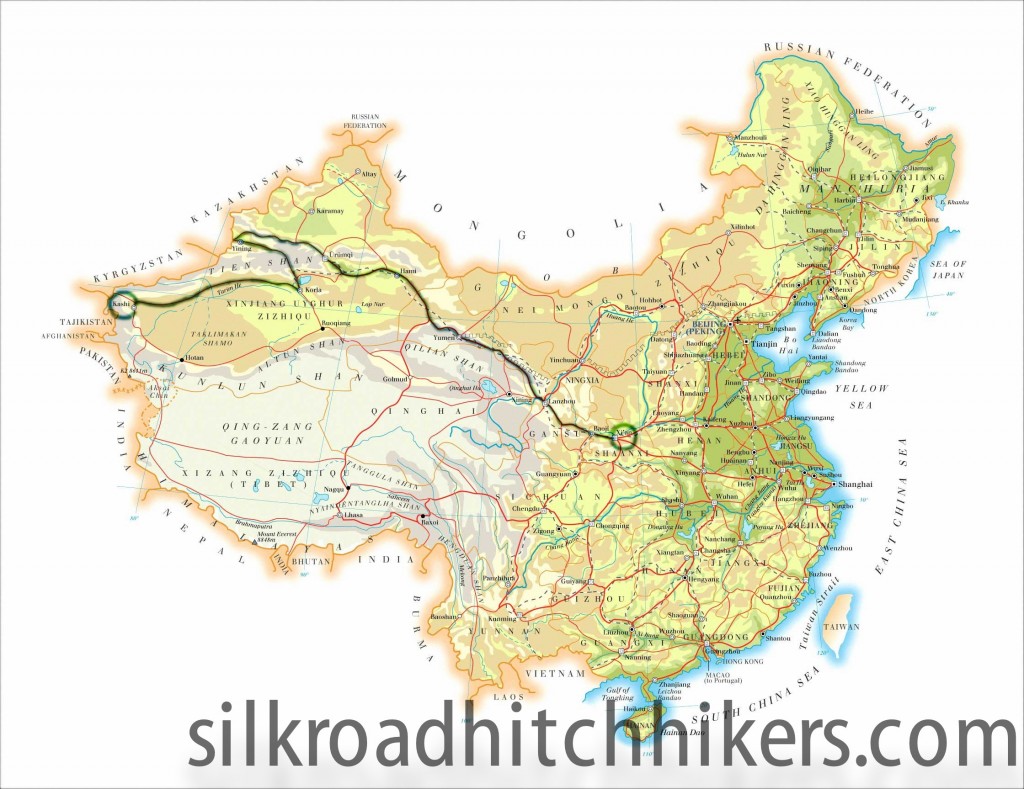Since winning the 2013 Outside Magazine Adventure Grant, we’ve been waiting for our trip to start. We’ve packed our bags, booked our flights and gotten our visas from the Chinese embassy. Galen has his camera gear, and Lee has his iPad. On June 6th, we will begin the journey of a lifetime, hitchhiking the Chinese section of the ancient Silk Road and hiking in the National Parks along the way.
We will begin in Xian, the capital of dynastic China. Though it is more famous for its Terracotta Warriors, Xian was the eastern terminus of the Silk Road and its markets were once flooded with goods and people from all corners of the world. Today, the remnants of this Silk Road heritage can be seen in the city’s Muslim Quarter. The Quarter’s Grand Mosque, one of the largest in China, is a mixture of Middle Eastern and Chinese architectural elements and a metaphor for the mélange of cultures that the Silk Road engendered.
From Xian, we will hitchhike to Mount Hua, one of the most sacred mountains in China, around June 11th. For two thousand years, Mount Hua has been an imperial pilgrimage site and a Daoist retreat. With its importance in Chinese history, the summitting of Mount Hua in time to watch the sun rise from the East Peak has become one of the most important hikes in all of China, and we will be following in the footsteps of hundreds of Chinese hikers as we negotiate the foot-wide wooden panels nailed into cliff faces in the pre-dawn darkness.
From Mount Hua, we will hitchhike westward, moving out of central China. We will trace a route along the Gansu Corridor, the thin strip of land squeezed between the Gobi Desert and the plateaus of Tibet, where thousands of caravans have passed on their way into and out of China. Gansu is home to the Great Wall’s final tower, where Chinese empires dissipate into the deserts further west. In Gansu, we will be hiking in the Qilian Mountains, the northern border of the Tibetan world, and camping in the Badian Jaran Desert, home to some of the world’s tallest dunes. As we travel west through Gansu, the geography will be more desert-like and the people will be more Central-Asian-like.
In early July, we will cross into Xinjiang, China’s restive far west. This will be the most adventurous and challenging part of the trip. Unlike the rest of China, Xinjiang’s population is majority Muslim and the province has recently experienced ethnic strife. We will explore these issues in the context of Xinjiang’s natural world, camping out in Kyrgyz yurts in Sayram Lake National Park. We will also take part in the Mongolian Nadaam Festival, with competitions in archery, wrestling and, of course, horseback riding, to be held in central Xinjiang in late July.
Our trip will end in the borderlands between the Chinese and Muslim worlds. We will visit Tashkurgan, a Tajik city in China along the branch of the Silk Road over the Karakoram Range, just a hundred and fifty miles from K2. Here, we will hike in Karakul Lake Park and will try Buzkashi, a polo-like game played with the carcass of a headless goat. From Kashgar, north of Tashkurgan, we will pass out of China into Kyrgyzstan and Uzbekistan to visit some of the most famous Silk Road entrepots like Samarkand and Bukhara.
Our objective for this trip is to not only see these fascinating sites and understand the history behind the world’s first globalization; we also seek to know how the Chinese see and use their outdoor spaces, so that, as the Chinese play a greater role in the world, their conception of what it means to hike, camp and climb can be better understood.
